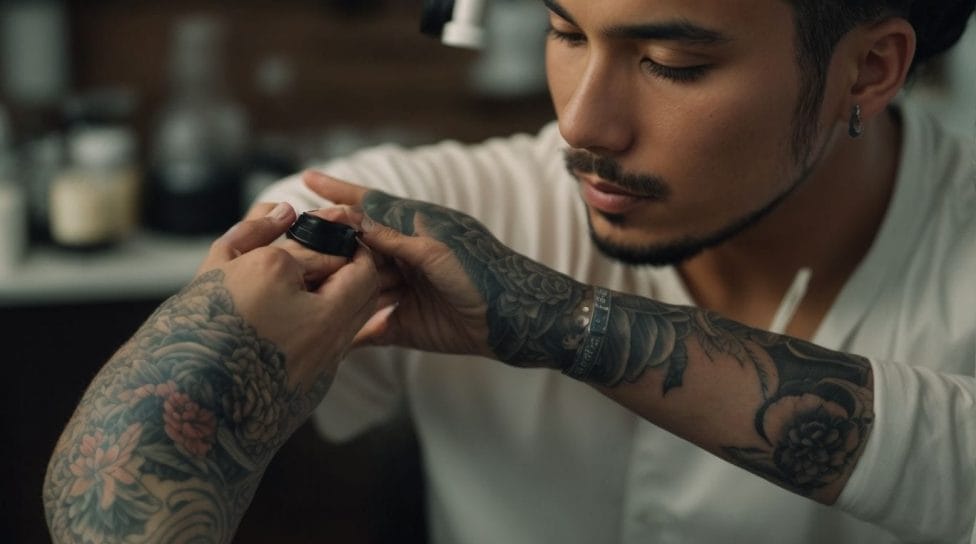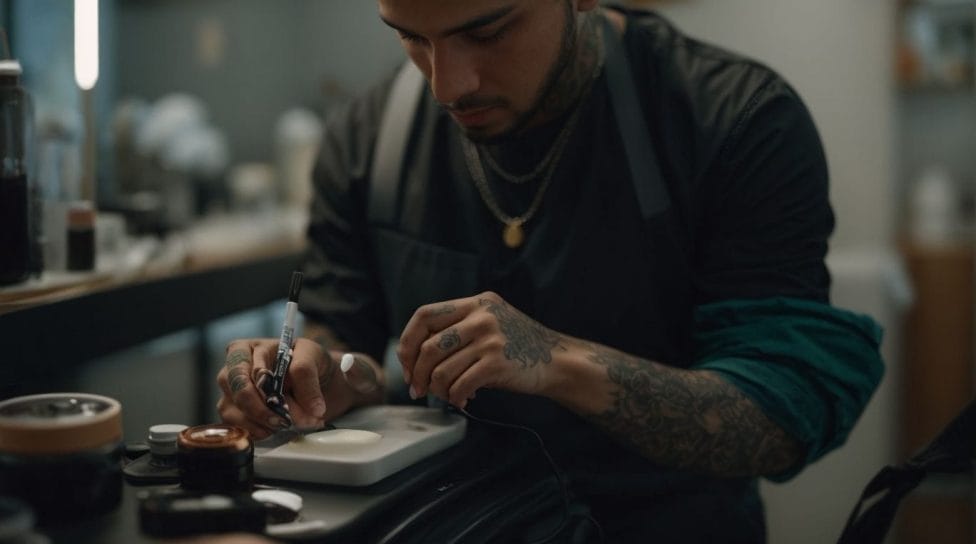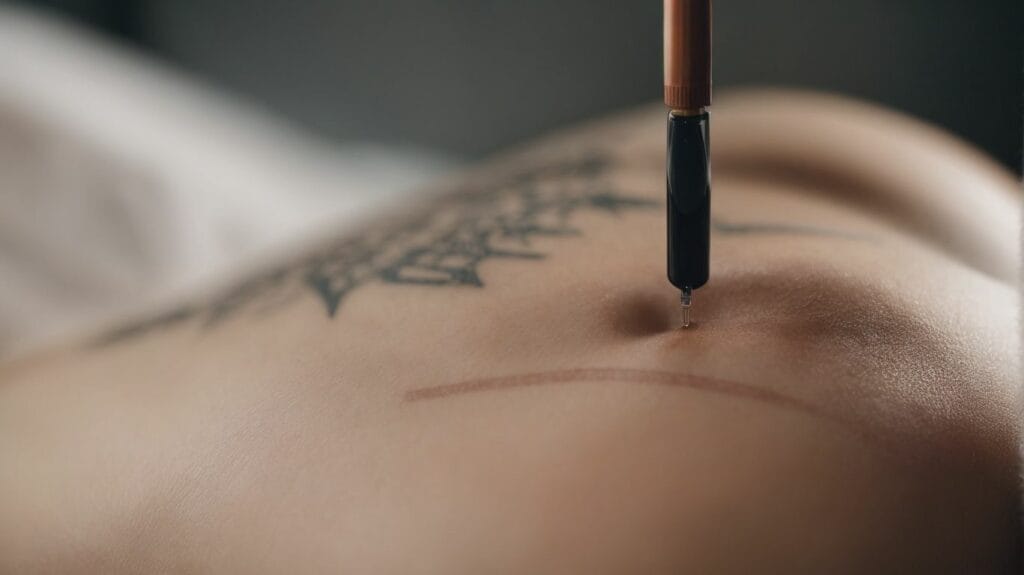Tattoo numbing cream has gained popularity as a potential solution for reducing the pain and discomfort associated with getting a tattoo. But how exactly does it work? Let’s delve into the mechanics behind tattoo numbing cream. The active ingredients in tattoo numbing creams are primarily responsible for their numbing effect. These include lidocaine, benzocaine, and tetracaine, which act as local anesthetics to block pain signals from reaching the brain. However, the effectiveness of tattoo numbing cream can vary from person to person, and the numbing effect is often temporary. Understanding how to properly apply and use tattoo numbing cream to maximize its potential benefits is essential. It’s crucial to be aware of the potential risks and side effects, such as allergic reactions, skin irritation, and delayed healing. By considering the precautions and following proper application techniques, individuals can make an informed decision about whether tattoo numbing cream is the right option for them.
Key takeaways:
- Tattoo-numbing creams can help reduce pain during tattooing, but their effectiveness varies from person to person.
- Tattoo numbing creams provide temporary numbness and may need to be reapplied during longer tattoo sessions.
- Potential risks and side effects associated with tattoo numbing creams include allergic reactions, skin irritation, and delayed healing.
How Does Tattoo Numbing Cream Work?

Photo Credits: Tattooineplanet.Com by Jason King
How Does Tattoo Numbing Cream Work?
Tattoo-numbing creams numb the skin’s nerve endings, reducing the sensation of pain during the tattooing process. These creams contain an active ingredient, such as lidocaine or benzocaine, which blocks pain signals from reaching the brain. When applied to the skin before getting a tattoo, the cream seeps into the layers of the skin and numbs the area. This allows the individual to undergo the tattooing process with reduced discomfort. It is important to note that tattoo numbing creams may have varying effectiveness depending on the individual’s pain tolerance and the size and location of the tattoo.
Pro-tip: Apply a thin layer of cream and cover it with plastic wrap to enhance the numbing effect.
What Are the Active Ingredients in Tattoo Numbing Cream?

Photo Credits: Tattooineplanet.Com by Lawrence Smith
Discover the secrets behind tattoo-numbing creams and their active ingredients. In this section, we’ll unveil the power of three key components: lidocaine, benzocaine, and tetracaine. From numbing sensations to pain relief, we’ll dive into how these ingredients work magic to make your tattoo experience more comfortable. Say goodbye to needle jitters and hello to ink with ease. Let’s explore the world of tattoo-numbing creams and their incredible active ingredients!
1. Lidocaine
Lidocaine is a widely used active ingredient in tattoo-numbing creams. It effectively blocks nerve signals in the skin, helping alleviate pain sensations during tattooing. When applied topically, lidocaine acts as a safe and reliable local anesthetic. It is crucial to follow the application and dosage instructions provided carefully. By using lidocaine numbing creams, individuals can experience temporary pain relief, enabling them to endure longer tattoo sessions. Before using any products containing lidocaine, it is essential to seek guidance from a professional tattoo artist or healthcare provider. Interestingly, not only is lidocaine utilized in tattooing, but it is also employed in various medical procedures to numb the skin.
2. Benzocaine
| Benzocaine is a commonly used active ingredient in tattoo numbing creams. It works by blocking nerve signals in the skin, reducing the sensation of pain during tattooing. |
| The effectiveness of benzocaine-based numbing creams may vary among individuals. |
| Once applied, the numbing effect of benzocaine typically lasts for about 1 to 2 hours. |
| In some cases, benzocaine can cause skin irritation or allergic reactions. |
To apply benzocaine-based tattoo numbing creams, follow the instructions provided by the manufacturer. Using the recommended amount is important, and avoiding applying it to broken or irritated skin is important.
While benzocaine is generally considered safe, it is advisable to perform a patch test before applying it to a larger area. If you experience any adverse reactions, discontinue use and consult a healthcare professional.
Benzocaine is an effective numbing agent used in tattoo numbing creams. Individual responses may vary, and there is a slight risk of skin irritation. Proper application techniques and precautions can help ensure a safe and comfortable tattooing experience.
3. Tetracaine
Tetracaine, commonly found in tattoo numbing creams, is an active ingredient that acts as a local anesthetic. Its mechanism of action involves blocking nerve signals in the skin, thereby reducing pain sensations throughout the tattooing process. Besides its wide usage in tattoos, tetracaine is highly effective in various medical procedures. However, it is crucial to exercise caution and seek professional guidance when using tetracaine. Although it offers temporary pain relief, it may lead to potential side effects such as skin irritation or allergic reactions. Hence, it is always advisable to consult with a tattoo artist or medical professional before using tattoo numbing creams containing tetracaine.
Does Tattoo Numbing Cream Work?

Photo Credits: Tattooineplanet.Com by George Taylor
Tattoo numbing cream – the big question: does it work? Let’s dive into the details and explore two key aspects. First up, the effectiveness of tattoo numbing creams can vary greatly from person to person. We’ll uncover the factors that influence its effectiveness. We’ll look closer at the temporary numbing effect these creams provide. Get ready to separate fact from fiction in tattoo-numbing creams.
1. Effectiveness Varies
The effectiveness of tattoo numbing cream can vary depending on several factors. Each individual’s pain tolerance and sensitivity levels vary, affecting how well the cream works for them. It is also important to consider the quality and strength of the ingredients in the cream, as some may be more effective than others. Proper application and adherence to instructions can impact the effectiveness of the cream. Effectiveness varies based on individual pain tolerance, sensitivity levels, and the quality and strength of ingredients used. It is recommended to test the cream on a small area of skin before applying it to a larger tattooed area to gauge its effectiveness.
| Factors Affecting the Effectiveness of Tattoo Numbing Cream |
| – Individual pain tolerance and sensitivity levels |
| – Quality and strength of ingredients |
| – Proper application and adherence to instructions |
Sarah decided to get a large tattoo on her back. She used a tattoo numbing cream based on a friend’s recommendation. Sarah didn’t experience much relief from the cream and found the tattooing process quite painful. On the other hand, her friend had a different pain threshold and found the same cream very effective in numbing the area. This highlights how the effectiveness of tattoo numbing cream can vary from person to person.
2. Temporary Numbing
Tattoo numbing cream temporarily relieves pain and discomfort during the tattooing process. It works by numbing the skin’s surface and reducing nerve sensitivity. The cream contains active ingredients such as lidocaine, benzocaine, and tetracaine, which help to block pain signals. The effectiveness of tattoo numbing cream, which offers temporary numbing, can vary from person to person. It is important to follow the instructions for proper application and consider potential risks and side effects such as allergic reactions, skin irritation, and delayed healing. It is advisable to consult with a professional tattoo artist and consider their recommendations when using temporary numbing cream.
How to Apply Tattoo Numbing Cream?

Photo Credits: Tattooineplanet.Com by Lawrence Ramirez
- To apply tattoo numbing cream effectively, follow these steps:
- Clean the tattoo area thoroughly with mild soap and warm water.
- Dry the skin completely using a clean towel or air dry.
- Apply a thin layer of numbing cream to the tattooed area using clean hands or a disposable applicator.
- Gently massage the cream into the skin until it is fully absorbed.
- Cover the tattoo with plastic wrap or a protective bandage to prevent the cream from rubbing off.
- Leave the numbing cream on for the recommended time specified by the product instructions.
- Before starting the tattooing process, remove the plastic wrap and wipe away any excess cream.
How to Apply Tattoo Numbing Cream:
– Make sure to read and follow the instructions provided with the numbing cream.
– Test a small skin patch before applying it to the entire tattoo area to ensure you have no adverse reactions.
– Consult with your tattoo artist for their recommendations on applying numbing creams.
Are There Any Risks or Side Effects?

Photo Credits: Tattooineplanet.Com by Henry Martin
Are you curious about the potential risks and side effects of using tattoo numbing cream? Let’s dive into it! This section will explore three key aspects: allergic reactions, skin irritation, and delayed healing. Brace yourself for surprising facts, expert insights, and real-life stories that shed light on the potential downsides of tattoo numbing cream. So, before you embark on your next ink adventure, arm yourself with essential knowledge to make an informed decision.
1. Allergic Reactions
Allergic Reactions are a possible danger when utilizing tattoo numbing cream. Some individuals may experience allergies to the active components, like lidocaine, benzocaine, or tetracaine. Indications of an allergic reaction can vary from mild irritation to severe swelling, itching, or difficulty breathing. To reduce the risk, performing a patch test before applying the cream to a larger area is crucial. If any indications of an allergic reaction manifest, promptly cease using the cream and seek medical attention. It is also recommended to consult with a healthcare professional or tattoo artist before utilizing tattoo numbing cream to ensure both the product’s safety and the well-being of your skin.
2. Skin Irritation
Skin irritation is a common concern when using tattoo numbing cream. Many individuals may experience skin irritation as a side effect, such as redness, itching, or a rash in the area where the cream was applied. To minimize the risk of skin irritation, it is important to carefully follow the instructions and perform a patch test before applying the cream to a larger area. Additionally, choosing a high-quality numbing cream with fewer additives and allergens can help reduce the chances of experiencing skin irritation. It’s interesting to note that skin irritation is a temporary and reversible side effect that typically resolves independently.
3. Delayed Healing
- Delayed healing is a potential risk when using tattoo-numbing creams. One way to prevent this is by following proper aftercare instructions provided by the tattoo artist.
- Gently cleaning the tattoo with mild soap and water twice daily can also help minimize the risk of delayed healing.
- Applying a thin layer of fragrance-free and hypoallergenic moisturizer is recommended to keep the tattoo hydrated, which can promote healing.
- To avoid complications, it is crucial to avoid picking at scabs or scratching the tattooed area.
- Furthermore, it is important to protect the tattoo from sun exposure, swimming pools, hot tubs, or excessive sweating until it is fully healed to prevent any delays in healing.
Fact: For the healing process of a tattoo, proper aftercare and patience are key to preventing delayed healing.
Precautions and Considerations

Photo Credits: Tattooineplanet.Com by Tyler Thomas
When considering using tattoo numbing cream, it’s important to take precautions and consider a few factors to ensure a safe and effective experience.
1. Consult a professional: Before using any numbing cream, it is always advisable to consult a tattoo artist or dermatologist for recommendations and guidance. It is crucial to take precautionary measures and consider their expert advice.
2. Follow instructions carefully: Read and adhere meticulously to the instructions provided with the numbing cream. By following these instructions, you can ensure proper usage and minimize the risk of any potential side effects.
3. Test on a small area: Before applying the cream to a larger area, conduct a patch test on a small part of your skin. It is recommended this. A patch test is essential to assess and detect any adverse reactions or allergies that may occur.
4. Choose a reputable brand: Selecting a numbing cream from a trusted and reputable brand is highly advisable. This precaution will help guarantee the quality and safety of your product.
Pro-tip: It is advisable to discuss using numbing cream with your tattoo artist beforehand. Doing so will enable you to understand their preferences and any specific precautions they may have.
Some Facts About Tattoo Numbing Cream: Does It Work?
- ✅ tattoo numbing creams are applied to the skin before getting a tattoo. (Source: Our Team)
- ✅ Numbing creams contain ingredients like lidocaine, prilocaine, or benzocaine. (Source: Our Team)
- ✅ Numbing creams block pain receptors in the skin, minimizing pain and discomfort during the tattooing process. (Source: Our Team)
- ✅ Higher percentages of active ingredients in numbing creams are more effective. (Source: Our Team)
- ✅ Numbing creams allow for longer tattoo sessions by reducing pain. (Source: Our Team)


